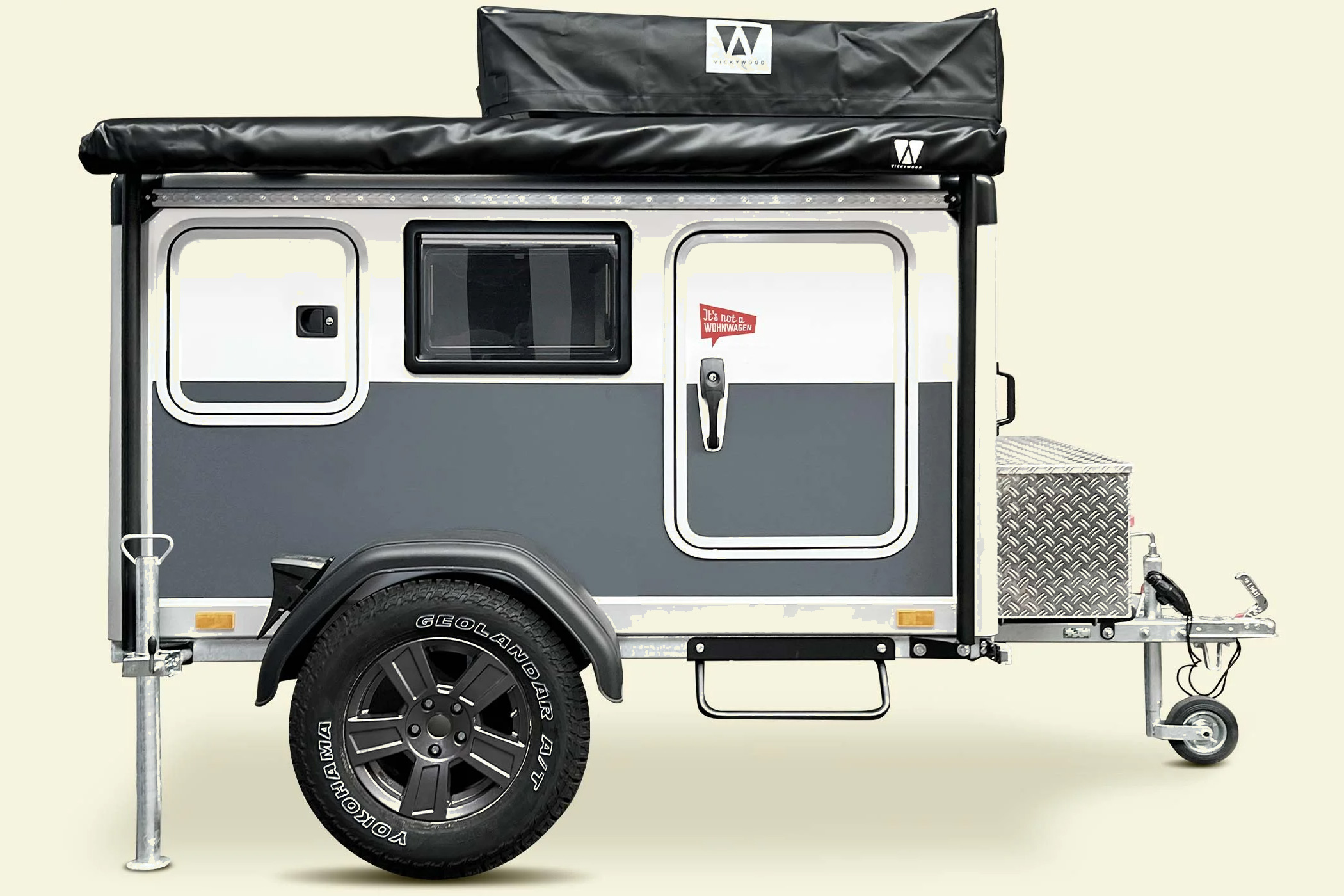
Ultra-compact, lightweight, and as minimal as it gets, tiny teardrop trailers are the purest expression of RV camping. They’re a clear step up from sleeping in a ground tent (or even a rooftop tent), but they’re designed to strip away all the flash and luxury of today’s fanciest motorhomes. That design ethos got Germany’s Sportcaravan thinking about how to make its already pint-sized Cube “caravan” trailers smaller and bigger simultaneously. Enter the Cube 1.

The full details on Sportcaravan’s “mega micro” travel trailer
The newest entry into Sportcaravan’s Cube line-up is also the smallest. The Cube 1 is tiny, even by teardrop trailer standards. By the numbers, it weighs just 700 pounds — light enough to be towed by almost anything with a hitch, from Subaru Outbacks to Honda CR-Vs to Toyota RAV4s. The shell measures just 10.5 feet from tip to tail and stands less than 5.5 feet tall when collapsed down. For reference, that’s less than two feet longer and four inches taller than a Smart Fortwo, making it more than capable of fitting in any standard garage or even in a parking garage space.

But here’s the kicker: Despite its tiny size, it’s roomy enough to sleep four adults comfortably when fully set up at camp. That’s thanks to a clever trick that, as far as we know, is entirely unique to Sportcaravan in the world of lightweight travel trailers. An ample double bed fills most of the interior floor with room for two adults. Overhead, a hatch-style “trap door” opens to allow access between the interior sleeping quarters and the accompanying rooftop tent. This simple access point works like a pop-top campervan to combine the two sleeping quarters into one free-flowing space. It’s a novel solution for families, especially those with young children. For solo campers and couples who live and work on the road, it opens up the option of separating the entire space into dedicated sleeping quarters up top and a live/work space “downstairs.”

Sportcaravan designed the Cube 1’s surprisingly homey interior with plenty of other thoughtful features, including shelving, hook strips, and airline rails around the cabin, allowing for maximum storage versatility. Over the foot of the bed is a wide rectangular “tunnel” that stores an indoor/outdoor slideout shelf that’s long enough for a portable power station and a kitchen worktop with room for a cutting board and portable camping stove.
The Cube 1 caravan is also designed to be an all-season travel trailer, so winter weather doesn’t have to mean it’s time to pack up your camping gear. Sportcaravan outfitted the shell with fiberglass sandwich panels insulated with polyurethane to keep things cool in the summer and warm in the winter. The rig comes standard with built-in ventilation, including opening windows, plus an Ecomat 2000 ceramic heater, which is an available add-on.

Build and spec your own ultra-tiny caravan-style travel trailer
As the entry-level model in Sportcaravan’s “Cube” line-up of caravan travel trailers, the Cube 1 is the most affordable. With a base price of just €12,900 (approx. US$13,000 at the time of this writing), it is reasonably affordable. While that’ll get you a surprisingly well-equipped trailer, the company also offers a long list of available options (a shower room, portable toilet, and vacuum-insulated cooler are all on the menu) that can easily tack on a few thousand dollars or more. There’s also the pesky logistics of figuring out how to get it from Germany back to the U.S. on the cheap. But, you could just hop a plane across the pond, pick up your new caravan, and travel ’round Europe for the foreseeable future.
Editors' Recommendations
- Garmin, Seiko, G-SHOCK, and more: Our picks for best outdoor watches in 2024
- We really wish these compact, Korea-exclusive RVs and campervans were available stateside
- We love this handsome van-life wood paneling, and it’s sustainable too
- How being stinky when hiking in the deep woods might actually save your life
- For skiing, snowboarding, and other dangerous activities, this is the only phone case we’ll use


